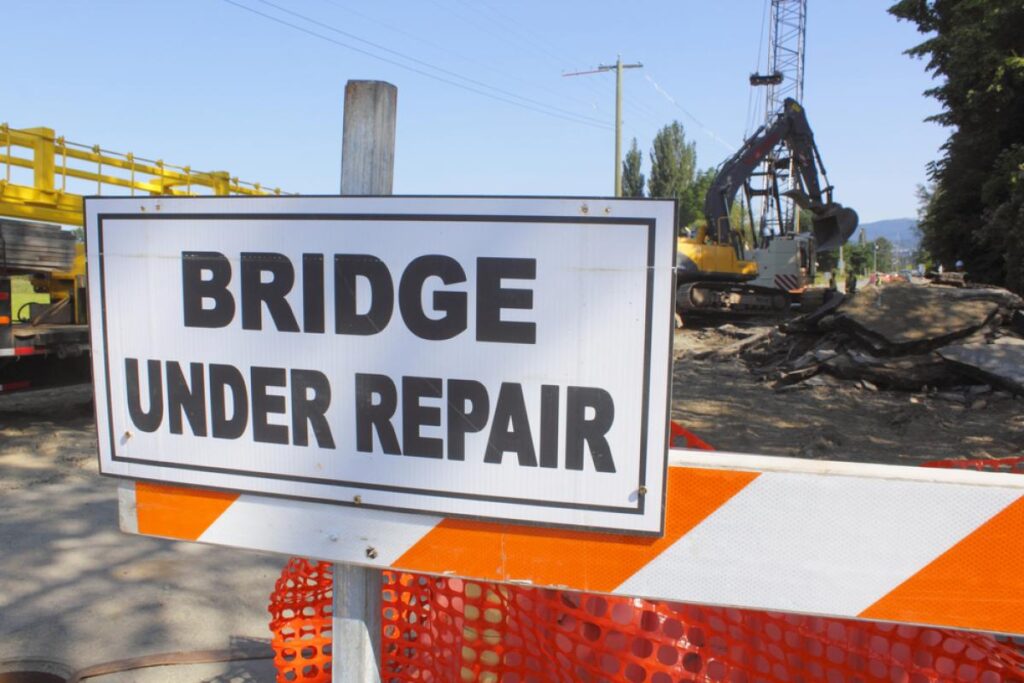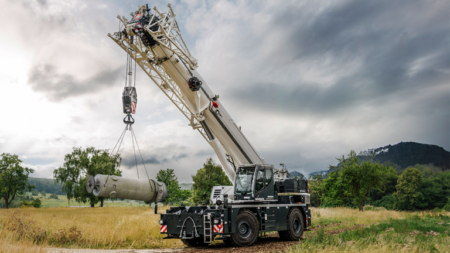Shutterstock photo
The Maine Department of Transportation (MaineDOT) expects Babb’s Bridge, a 48-year-old covered bridge between the towns of Gorham and Windham, to remain closed to vehicle traffic until the second quarter of 2025 after an overweight dump truck fell through the structure’s deck on Aug. 23.
Bridge engineers from MaineDOT inspected the structure on Aug. 26 and determined that some of the bridge beams were damaged as a result of the accident.
Repairs can be accomplished by crews from the state agency, but new lumber will need to be milled specifically to match the species and dimensions of the remaining lumber on the bridge. Procuring the materials is expected to take several months, meaning construction is unlikely to happen until weather the spring.
So far, MaineDOT does not have an estimated repair cost for the bridge.
Babb’s Bridge, which carries Covered Bridge Road over the Presumpscot River between Gorham and Windham, has a posted weight limit of three tons.
According to the Gorham Police Department, the dump truck was loaded with crushed gravel, which made the weight of the vehicle several times heavier than the structure’s posted weight limit. The truck entered the bridge from the Gorham side and fell through the first panel of the bridge deck into the river below.
The single-lane bridge is a state-owned structure that, on an average day, supports approximately 360 vehicles as they cross the river.
The original Babb’s Bridge was built in 1840 and was Maine’s oldest covered bridge until it was burned by vandals in 1973.
MaineDOT rebuilt an exact replica of the bridge using lumber milled in Gorham and historically authentic construction techniques. The wood replacement bridge opened in 1976 with stone abutments on either side of the river.
Transportation agency engineers inspect Babb’s Bridge at least every two years, with its last inspection occurring at the end of July.
The weight limit on the bridge was first posted at three tons in 1983 and has not changed since then, MaineDOT noted.
Maine Law School to Double Space With Portland Expansion
The still-new home to the University of Maine (UM) School of Law in Portland may soon expand to a newer home next door, and the process is already under way, Mainebiz reported Aug. 28.
The Maine Graduate & Professional Center — which houses the law school, the Maine Graduate School of Business and the University of Southern Maine’s Muskie School of Public Service — has leased nearly four floors of a five-story office building at 7 Custom House St., a spokesperson told Mainebiz.
The building adjoins 300 Fore St., which the University of Maine System (UMS) renovated at a cost of nearly $14 million and where the three UMS schools and other programs opened in January 2023 as the Maine Center.
So far, the center is using a single floor in the neighboring building after investing about $300,000 on new paint, carpet, furnishings and equipment.
But on Aug. 28, a UMS trustee committee unanimously approved spending $650,000 to draft plans and make other preparations for building out the rest of the new space. UMS already has about $8.5 million available for the actual expansion.
If the work goes as proposed, the Maine Center’s footprint in Portland’s Old Port area will more than double next year, from 63,000 sq. ft. on Fore Street to a total of 130,000 sq. ft.
In 2026, UMS would have the option to purchase the buildings for a total of $37 million, according to a presentation at the recent meeting of the trustees’ Finance, Facilities, and Technology Committee. That funding would come from a previous $55 million commitment by the Harold Alfond Foundation.
The goal of the expansion is to create a “world-class interdisciplinary graduate center and innovation hub,” according to the presentation by Seth Goodall, executive director of the Maine Center and CEO of Maine Center Ventures.
The expanded center would support four functions, according to the presentation:
- Core interdisciplinary graduate degrees and programs, comprising the three schools and offerings from the University of Maine College of Engineering and Computing.
- Professional development and executive education, responding to the needs of Maine’s industries, its workforce and business leaders.
- Entrepreneurship and innovation, providing resources to advance research, development, product commercialization and economic development.
- Convening and knowledge-sharing, through hosting events, scholars, leaders and others to address Maine’s challenges.
Under the Maine Center’s plan, graduate education would remain mostly at Fore Street, while work related to business innovation would primarily take place at Custom House Street.
But neither building would be a silo.
Currently, 300 Fore St. and 7 Custom House St. are connected by a joint stairwell, Mainebiz noted, and the Maine Center hopes to open up more access between the structures.
“We are striving to create one building, one hub,” Goodall told the trustees.
Read the full article here











